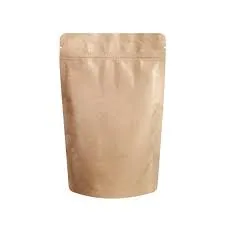- Afrikaans
- Albanian
- Amharic
- Arabic
- Armenian
- Azerbaijani
- Basque
- Belarusian
- Bengali
- Bosnian
- Bulgarian
- Catalan
- Cebuano
- chinese_simplified
- chinese_traditional
- Corsican
- Croatian
- Czech
- Danish
- Dutch
- English
- Esperanto
- Estonian
- Finnish
- French
- Frisian
- Galician
- Georgian
- German
- Greek
- Gujarati
- haitian_creole
- hausa
- hawaiian
- Hebrew
- Hindi
- Miao
- Hungarian
- Icelandic
- igbo
- Indonesian
- irish
- Italian
- Japanese
- Javanese
- Kannada
- kazakh
- Khmer
- Rwandese
- Korean
- Kurdish
- Kyrgyz
- Lao
- Latin
- Latvian
- Lithuanian
- Luxembourgish
- Macedonian
- Malgashi
- Malay
- Malayalam
- Maltese
- Maori
- Marathi
- Mongolian
- Myanmar
- Nepali
- Norwegian
- Norwegian
- Occitan
- Pashto
- Persian
- Polish
- Portuguese
- Punjabi
- Romanian
- Russian
- Samoan
- scottish-gaelic
- Serbian
- Sesotho
- Shona
- Sindhi
- Sinhala
- Slovak
- Slovenian
- Somali
- Spanish
- Sundanese
- Swahili
- Swedish
- Tagalog
- Tajik
- Tamil
- Tatar
- Telugu
- Thai
- Turkish
- Turkmen
- Ukrainian
- Urdu
- Uighur
- Uzbek
- Vietnamese
- Welsh
- Bantu
- Yiddish
- Yoruba
- Zulu
Effective Methods for Sealing Plastic Bags Using Heat Techniques
How to Seal a Plastic Bag with Heat A Comprehensive Guide
Sealing plastic bags with heat is a practical method that ensures the contents of the bag are secure, fresh, and protected from the elements. Whether you’re a home cook looking to preserve leftovers, a craft enthusiast organizing materials, or someone who enjoys vacuum-sealing for longer shelf life, knowing how to properly seal a plastic bag can make a significant difference. This article outlines the steps to effectively seal a plastic bag using heat, ensuring optimal results every time.
Understanding the Process
Sealing plastic bags with heat usually involves a heat source that melts the edges of the plastic, allowing them to fuse together once cooled. This creates an airtight seal that prevents air, moisture, and contaminants from entering. The two most common methods for heat sealing are using a heat sealer or a household iron.
Materials Needed
1. Plastic Bags Choose high-quality, heat-sealable plastic bags. Polyethylene and polypropylene bags are suitable options. 2. Heat Source A commercial heat sealer is ideal, but a regular household iron can also be used. 3. Cloth or Parchment Paper This protects the plastic from direct contact with the heat source, preventing it from melting too much. 4. A Clean Surface Always work on a clean, flat surface to avoid contamination.
Steps to Seal a Plastic Bag with Heat
1. Prepare Your Work Area
Start by ensuring your work surface is clean and dry. Lay out all your materials so that they are easily accessible. If you are using a household iron, plug it in and set it to a low to medium heat setting, allowing it to preheat.
2. Fill the Plastic Bag
Carefully fill the plastic bag with your desired contents. Be mindful not to overfill the bag, as this can make sealing difficult. Leave at least an inch of space at the top to ensure an effective seal.
3. Remove Excess Air
For optimal results, it's essential to remove as much air as possible from the bag. You can do this by gently compressing the sides of the bag to push the air out. For vacuum-sealing, consider using a vacuum pump if available, as this will greatly extend the freshness of the contents.
how to seal a plastic bag with heat

Once the bag is filled and excess air is removed, grab the top of the bag and fold it down slightly to create a clean edge for sealing. This ensures that the heat can effectively seal the bag without any contents interfering.
5. Heat Sealing with a Heat Sealer
If you have a heat sealer, place the bag in the sealing area, ensuring the folded edge is aligned with the heating element. Close the sealer and press down for a few seconds as per the manufacturer's instructions. Most heat sealers will indicate when the seal is complete—typically with a light or a sound.
6. Heat Sealing with an Iron
If using an iron, place the cloth or parchment paper over the folded edge of the bag. Press the iron onto the covered area for about 5 to 10 seconds, applying even pressure. Move the iron along to cover the entire edge, ensuring the seal is consistent. Be careful not to overheat, as this can cause the bag to melt or warp.
7. Let It Cool
After sealing, allow the bag to rest on a flat surface for a few moments to ensure the seal adheres properly as it cools down. Avoid moving or pulling on the bag during this time to maintain the integrity of the seal.
Checking the Seal
Once cooled, gently tug on the sealed edge to ensure it is secure. If there are any areas that feel loose or have not sealed properly, you can reheat that section using the same methods outlined above.
Conclusion
Sealing plastic bags with heat is an efficient way to keep your items fresh and safe from contamination. By following the steps outlined in this guide, you can master the technique of heat sealing, whether for food preservation, storage, or crafting projects. With practice, you’ll find that this method not only saves space but also enhances the longevity of the contents within your bags. Happy sealing!













